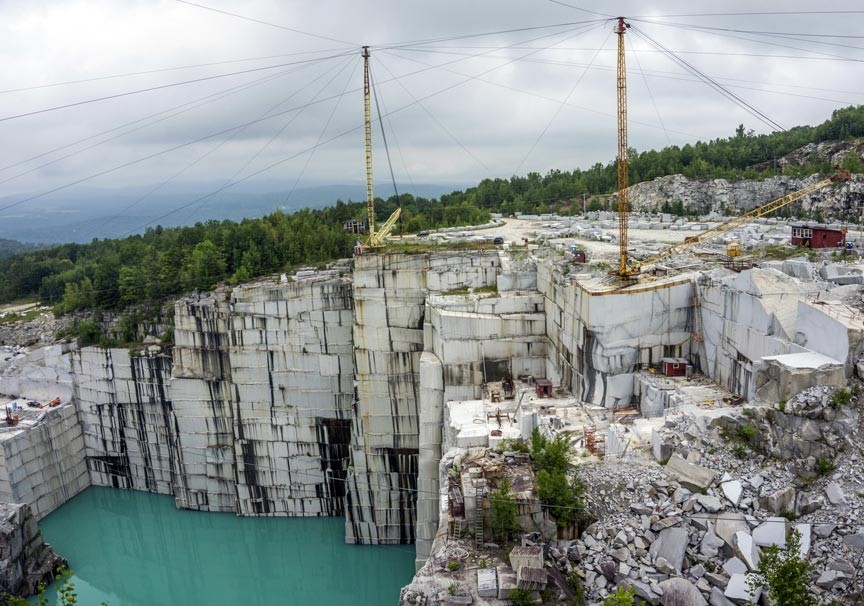A Trip With Granite Quarries in South Africa: Unveiling Nature's Artistry
A Trip With Granite Quarries in South Africa: Unveiling Nature's Artistry
Blog Article
Revealing the Mysteries of Granite Quarrying: Where Toughness and Sophistication Meet
The world of granite quarrying is a realm where the raw stamina of nature assembles with human virtuosity to create structures that stand the test of time with an air of sophistication. From the midsts of quarries to the thorough polishing in workshops, the process of transforming granite into building wonders is an intricate dancing of practice and innovation. As we peer into the depths of this ancient craft, we begin to discover the concealed ins and outs that form the really significance of our constructed environment.
The Origins of Granite Quarrying
In the record of architectural background, the beginnings of granite quarrying are shrouded in a tapestry of old workmanship and geological wonders. Going back to old Egypt and Mesopotamia, the removal of granite from quarries noted the start of a trip that would ultimately cause the development of a few of the world's most famous frameworks.
Granite quarrying's roots can be traced to the competent artisans who recognized the stone's durability and aesthetic allure. Via a mix of primitive tools and large decision, these very early quarry workers uncovered granite blocks that would certainly come to be the structure blocks of people.
As worlds developed, so did the techniques of quarrying granite. The Romans, renowned for their design expertise, established advanced methods for removing granite to build monuments, holy places, and roadways that stood the test of time.
The legacy of these old quarrying methods continues to form contemporary architecture, with granite continuing to be a sign of stamina and elegance in building and construction jobs around the globe. (granite quarries in south africa)
Devices of the Quarrying Trade
The advancement of granite quarrying methods from ancient human beings to contemporary times highlights the crucial duty played by the devices of the quarrying sell forming the industry's techniques. In ancient times, quarrying devices were simple, frequently containing blades, hammers, and wedges made from products like bronze or iron. These tools called for considerable workforce and time to essence granite obstructs from quarries.

In addition, the intro of pneumatically-driven devices and high-powered equipment has substantially minimized the physical labor needed in quarrying operations, enhancing worker safety and security and performance. As the quarrying sector proceeds to innovate, the tools of the trade continue to be at the center of driving development and shaping the future of granite extraction.
Extracting Blocks of Granite
Making use of accuracy machinery and advanced strategies, the removal of granite blocks from quarries has come to be an innovative process in the modern quarrying sector. The first step involves recognizing the place and size of the granite down payment try this website to figure out the most efficient removal technique. Once an ideal site is selected, the removal process starts with the boring of holes for the positioning of dynamites. Regulated blowing up techniques are after that utilized to disintegrate the granite into manageable areas.

Polishing and Finishing Techniques
To achieve a perfect surface on granite blocks, proficient craftsmens use a collection of careful polishing and ending up methods. After the preliminary extraction and shaping processes, the granite blocks undergo a detailed polishing phase to improve their all-natural beauty and resilience.
In addition to polishing, ending up methods are used to further improve the granite's appearance. These strategies may consist of flaming, honing, or cleaning, each offering one-of-a-kind structures and finishes to match different visual preferences. Flaming, for circumstances, includes exposing the granite surface area to heats to develop a harsh, textured coating, suitable for outside applications where slip-resistance is important. Refining, on the other hand, offers a matte finish that is smooth to the touch, ideal for interior her response counter tops and floor covering. By meticulously picking and applying these polishing and completing techniques, artisans can transform raw granite obstructs right into beautiful items that display both strength and elegance.

Environmental Effect and Sustainability
With the growing focus on ecological awareness in the sector, granite quarrying methods are increasingly looked at for their effect on natural deposits and long-term sustainability. Quarrying for granite can have substantial environmental implications. The removal process usually involves using hefty equipment, explosives, and big quantities of water, bring about environment destruction, dirt disintegration, and water contamination. Additionally, the transportation check my source of granite from quarries to refining centers generates carbon exhausts, further adding to environmental degradation. granite quarries in south africa.
To mitigate these effects and make certain sustainability in granite quarrying, industry stakeholders are adopting numerous measures. Implementing innovative innovations to reduce power usage and water use, reclaiming quarried land for ecological reconstruction, and promoting accountable sourcing practices are some methods being employed. In addition, accreditations such as the Forest Stewardship Council (FSC) and the Leadership in Energy and Environmental Design (LEED) help consumers determine ecologically friendly granite products.
Verdict
Finally, granite quarrying is a procedure that requires specialized devices and techniques to extract blocks of granite and polish them to a high level of coating. While the ecological impact of quarrying can be significant, efforts are being made to enhance sustainability methods in the sector. In general, granite quarrying is a fragile equilibrium in between utilizing the stamina and style of this natural stone while reducing its effect on the setting.
Report this page